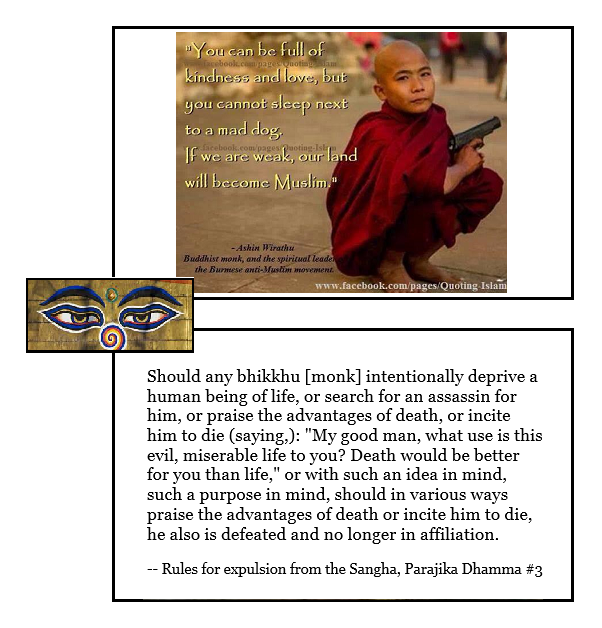Downward Spiral as a pattern in conflict — do we study it?
Friday, October 21st, 2016[ by Charles Cameron — a thoroughly impertinent riff on that saying of von Moltke ]
.
Hw many places could this sentence be applied to?
But the latest attacks, which appear to have been several months in the preparation, threaten to draw the entire population into a downward spiral of deadly confrontations, violent crackdowns by the security forces and toxic relations between local communities and the authorities.
It happens to come from an article about the Rohingya, Richard Horsey‘s Reality bites for Aung San Suu Kyi amid surging violence from the Nikkei Asian Review.
But how many other places might such a sentence apply to?
I ask this because we tend to focus on certain words in a sentence like this: attacks, preparation, threat, population, deadly confrontations, violent crackdowns, security forces, local communities, the authorities. Those are the forces in play, if you will. But their play follows the rules of a certain game, and that game is also named in the sentence.
Its name is downward spiral.
**
Spiral staircase, the Vatican, Rome
**
What I want to suggests that we might learn a great deal if we shifted our attention from attacks, preparation, threat, population and the rest, and thought about spiral.
Spiral is the form that the attacks, preparation, threat, population and the rest — here and in those other places — takes, and as such it’s an archetype that underlies them, not just among the Rohingya, their Buddhist compatriots and Aung San Suu Kyi, but across the globe and through time itself.
Spiral as a pattern in conflict — do we study it?
**
If, as I suppose, von Moltke can be translated as saying, “no operating concept survives contact,” it would seem we may need to conceptualize contact, ie the complexity of relations, rather than operations, which are far more focused on us — how we “will prevent conflict, shape security environments, and win wars” — than on conflict and wars, both of which are minimally two-party affairs.
And I’m not trying to say anything so terribly new here, just to give fresh phrasing to Paul Van Riper‘s comment:
What we tend to do is look toward the enemy. We’re only looking one way: from us to them. But the good commanders take two other views. They mentally move forward and look back to themselves. They look from the enemy back to the friendly, and they try to imagine how the enemy might attack them. The third is to get a bird’s-eye view, a top-down view, where you take the whole scene in. The amateur looks one way; the professional looks at least three different ways.
**
Quinta da Regaleira, Sintra, Portugal, credit Joe Daniel Price
**
The sentence immediately preceding the one from the Nikkei Asia article I quoted above will hopefully illuminate hope in a pretty desperate situation:
The majority of this community and its religious leaders continue to eschew violence.
**
Image sources:
Both spiral images from the Top 10 Spiral Architecture page






